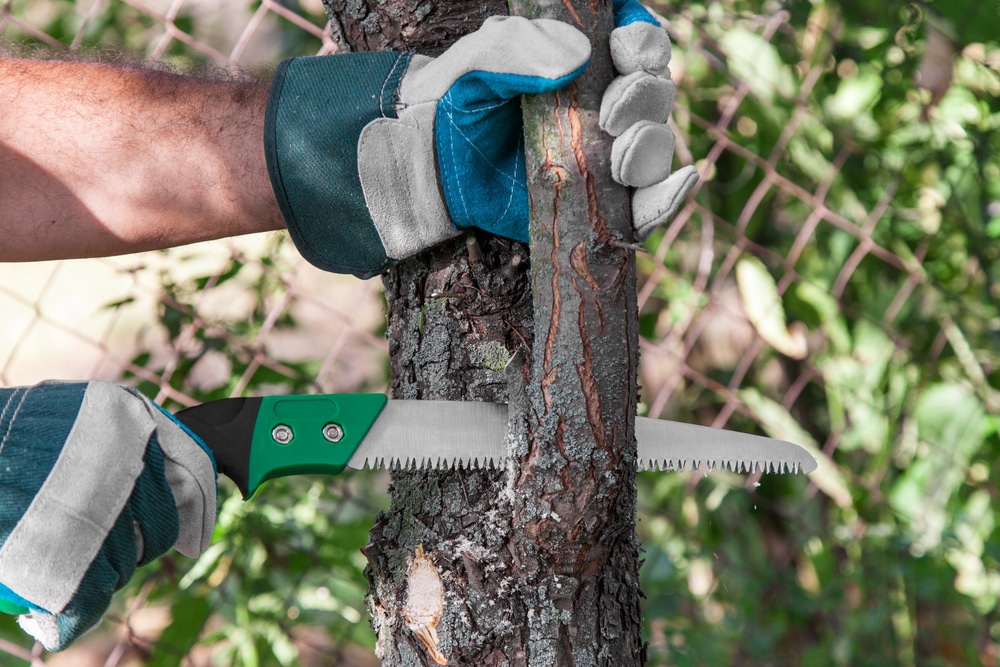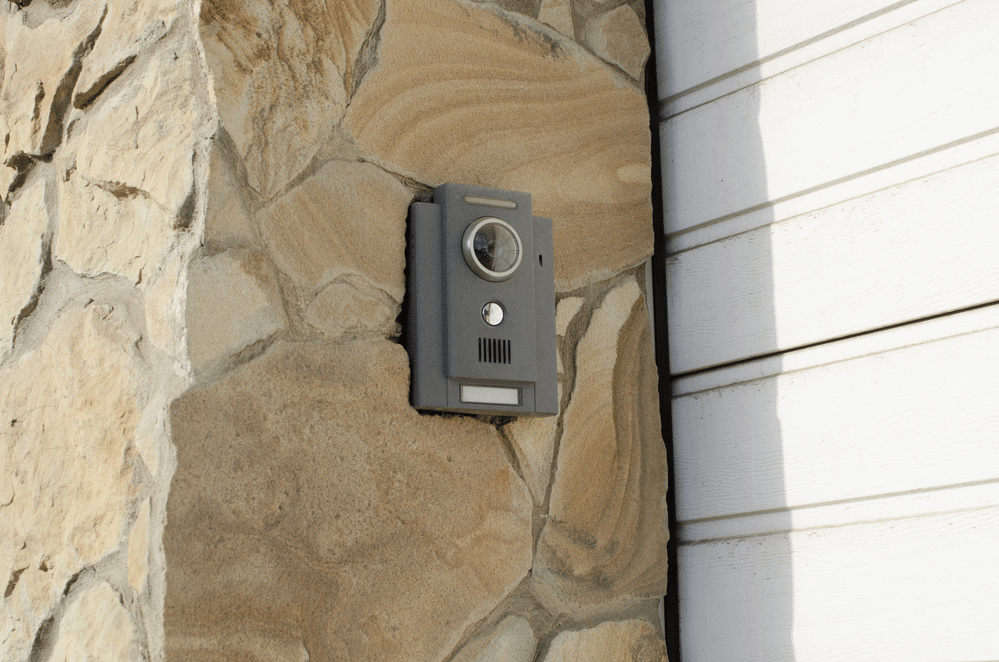Last Updated on
So, what is a pruning saw? Chances are you have heard the term, and you probably know it has something to do with cutting back plants or trees, but what else should you know about pruning saws?
When Would You Use a Pruning Saw?
Let’s begin by looking at when you would use a pruning saw, as that helps you better understand why you would want to have this particular tool in your arsenal. To be honest with you, knowing what is a pruning saw is only part of the process because what’s the point if you have no idea what it involves?
This particular saw is going to be used when normal pruners are just not up to the job. Because of this, it’s possible that the branches or limb you want to prune won’t fit through a standard pruner; therefore, you’ll need to chop it down as carefully as you can.
Tree Pruning Made Easy
Pruning shears are just not going to make the grade when dealing with a tree. Instead, you need to use a pruning saw, especially when dealing with branches, or parts of plants, that are more than 1.5 inches thick. Anything thicker than that will be impossible to cut with any tool other than a saw, so don’t even consider trying.
Shrubs and Plants
Pruning saws can also be used for cutting back shrubs and plants where the stems are too thick for regular pruners. Remember that shears will only be good for stems around 1 inch thick, so anything else will require different tools, and that is where this saw comes into its own.
The Basics of a Pruning Saw
There are different types of pruning saws. First, you can purchase folding saws that make storage easier. Next, they can come with either a curved blade or a straight blade, but more on the difference between them later.
The saw blade on a pruning saw is also significantly rougher, with larger teeth than ordinary saws. That is because we are talking less about finesse when cutting things than a normal saw.
The Grip

As pruning saws are handheld, it’s good to know that you will have a firm grip at all times. With the grip, you hold it more like a carving knife than the handle on a normal saw. However, this is due to the need to often have a closed hand to get into more difficult-to-reach places.
Whenever you want to prune a plant or tree, there will often be branches you want to leave alone, so you need to have as small a grip as possible to get into those spots. However, this tool will often have notches on the grip that will allow you to get your fingers wrapped around it to feel confident in what you are doing.
As a quick note, folding pruning saws will involve the blade folding into the grip for safe storage. When in use, take your folding pruning saw, pull the blade out, and you are good to go.
Live or Dead Limbs
Pruning saws can be used to cut back either live, dead, or diseased limbs or parts of plants. However, it does work better on dead parts than ordinary shears would do, which will also give the tool a major advantage.
Low to the Ground and High Limbs
Pruning saws can be used to cut branches low to the ground. While a pole saw, whereby the pruning saw is on the end of a long pole, can be used to cut down a branch that is causing problems that is just out of reach.
That does increase the functionality of the pruning saw.
The Teeth on the Pruning Saw
The teeth on the pruning saw are made in a particular way. The blades need to be tough to work through the branches. The teeth should be heat treated, as this makes them harder and capable of withstanding a lot of punishment.
The teeth on the blade are slightly longer than ordinary saws, but that’s not always the case.
Instead, there are some pruning saws with finer teeth. If you do get a curved blade with finer teeth, you will tend to find that it will only work on branches around 2.5 inches thick. Anything thicker than that will lead to you needing to tackle the branch with pruning saws that have heavier teeth.
More on the Blades
We mentioned there being curved blades and straight blades with pruning saws, so what’s the difference? Well, apart from the shape, there’s a safety issue here.
A straight blade is primarily used for making those cuts on a tree branch where it’s up to around shoulder height. Curved blades will be better used when making cuts above your shoulder height but still within reach. The curved blade means you can extend your reach slightly and still do so while remaining in complete control of the sawing motion.
Also, the blades are made from steel, and they are exceptionally sharp.
The Length of the Blades
The length of these blades is kept relatively short, and that’s because of how you will use the pruning saw in your garden.
This type of saw will often be used in tough circumstances. The tool must be able to get into those difficult spots, especially where regular pruners will not be able to cut the branch due to its thickness.
You will often find the shortest blade around 9 inches in length, while the longest can be up to 12 inches in length.
Dealing With Higher Branches
We mentioned earlier how pruning saws could be used to tackle branches at all heights, but if you are going above your reach, then that’s where a pole saw will be helpful.
With a pole saw, it contains a pruning saw on an extendable pole that allows you to reach a branch that is higher up in the tree. It still provides you with the same amount of control over cutting, but all without the need for a ladder.
This version tends to come with a curved blade. That’s because it makes it easier to see what you are cutting when it is curved instead of the straight blade version.
A Quick Guide to Using Pruning Saws
Let’s quickly run through how to use your pruning saw to help you gain a better understanding of the types of jobs you can do while gardening.
Selecting the Branches
As pruning saws can cut through thicker branches or parts of plants, you need to select what you will be sawing in advance. Knowing what you will be cutting allows you to plan and can position where you are standing to get the right angle for cutting.
Remove Small Pieces
Keep in mind that the length and thickness of the branch are going to equate to the weight. You need to remove small pieces to make life easier, but thanks to these tools, making numerous cuts will be easy.
Remove small parts before you work up to your last and final cut. That way, you make life easier.
Remember Gravity
Pruning saws should always be used with you, starting at the top of the branch or plant you are cutting and allowing gravity to take hold.
Pressure on the Pull and Light on the Push
Pruning saws will work better when you can apply more pressure on the pull stroke and lighter on the push stroke. That way, the teeth are going to be able to rip through the branch.
Making Those Cuts Is Easy
Making cuts with these tools is easy. You don’t need to use a lot of power to cut, thanks to those teeth on the blade. It applies to all of the different types of pruning saws, and no matter the length.
So, Who Should Use Pruning Saws?
Finally, who should use pruning saws as opposed to other pruners on the market? Well, anyone who is interested in gardening and wants to cut back those trees or plants that are either suffering from disease or simply taking over.
At least the small branches, cutting back trees should never be difficult, and these tools will prove that to be the case.
A pruning saw can be an excellent addition to your tool kit, and it should be something that anybody serious about their garden should have in their arsenal.
Get Your Pruning Saw
So, what is a pruning saw? It transforms the way you will go about pruning trees, branches, shrubs and plants. It has a tough blade, which is tougher than other saws, and pruning will become a breeze. If you love your garden, then owning one is going to be essential.
Paul is the type of person who never met a problem he couldn’t fix. He can always be found tinkering with something in his house, even if it isn’t broken! His tips and tricks are often shared on our site. He’s the one you call when something breaks because he has been known to improvise fixes for everything from leaky faucets to malfunctioning dryers.



